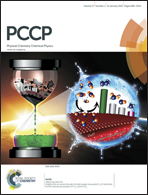Near field plasmonic gradient effects on high vacuum tip-enhanced Raman spectroscopy
Abstract
Near field gradient effects in high vacuum tip-enhanced Raman spectroscopy (HV-TERS) are a recent developing ultra-sensitive optical and spectral analysis technology on the nanoscale, based on the plasmons and plasmonic gradient enhancement in the near field and under high vacuum. HV-TERS can not only be used to detect ultra-sensitive Raman spectra enhanced by surface plasmon, but also to detect clear molecular IR-active modes enhanced by strongly plasmonic gradient. Furthermore, the molecular overtone modes and combinational modes can also be experimentally measured, where the Fermi resonance and Darling–Dennison resonance were successfully observed in HV-TERS. Theoretical calculations using electromagnetic field theory firmly supported experimental observation. The intensity ratio of the plasmon gradient term over the linear plasmon term can reach values greater than 1. Theoretical calculations also revealed that with the increase in gap distance between tip and substrate, the decrease in the plasmon gradient was more significant than the decrease in plasmon intensity, which is the reason that the gradient Raman can be only observed in the near field. Recent experimental results of near field gradient effects on HV-TERS were summarized, following the section of the theoretical analysis.



 Please wait while we load your content...
Please wait while we load your content...